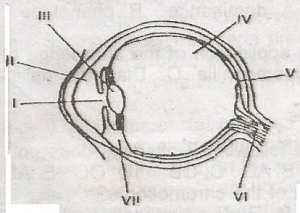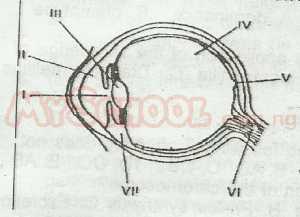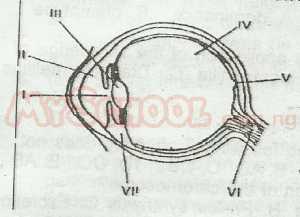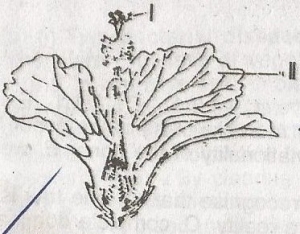Which of the following is the underlining Principle in the adoption of biological control of pests?
- A. Knowledge of agricultural practices by the farmer
- B. Relationship between plants and animals
- C. The presence of poisonous chemicals in the farm
- D. The relative population of plants and animals in the farm
- E. The predator prey relationship in ecological community
Which of the following substances cannot control the growth of harmful micro organisms?
- A. Antibiotics
- B. Hypertonic salt solution
- C. Disinfectants
- D. isotonic sugar solution
- E. Antiseptics.
The use of predators or parasites to control pests in the farm is known as
- A. predator control
- B. chemical control
- C. biological control
- D. animal control
- E. parasitic control
Which of the following is not a characteristic of overcrowding in plant and animal community?
- A. Population outstripping available space
- B. Population exceeding available food
- C. Competition within the population
- D. increase in primary production
- E. Population increasing at the same rate as the birth rate
A climax community is characterised by
- A. a stable composition of plant and animal species
- B. rapid changes in the composition of species
- C. constant changes in appearance of the habitat
- D. different species occurring at different times
- E. gradual change in animal population
Which of the following is not an adaptation of plants or animals to desert environment?
- A. Well developed tap root system
- B. Small leaves with thick Epidermis
- C. Stems with spike-like leaves
- D. Metabolic waste in the form of uric acid in some animals
- E. Broad leaves for storage
Which of the following water pollutant may contain organisms that cause dysentery?
- A. Pesticides
- B. Sewage
- C. Industrial wastes
- D. Fertilizers
- E. Crude oil.
Sea water taken in by a living organism can be recycled into the atmosphere through all the following
processes except
- A. transpiration
- B. digestion
- C. excretion
- D. respiration
- E. decay
In which of the following processes is carbondioxide not given out?
- A. Respiration in plants
- B. Decay of organism
- C. Burning of organic matter
- D. Burning of fuels
- E. During photosynthesis.
Which of the following explains the term pyramid of numbers?
- A. The number of organisms in a trophic level
- B. The relationship between plants in different trophic levels
- C. The number of saprophytes and parasites in a habitat
- D. The number of predators in a habitat
- E. Progressive decrease in the number of individuals from lower to higher trophic level
The following are features of Northern Guinea Savanna except
- A. presence of tall trees with thick bark
- B. bare soil with very few trees
- C. presence of fire-resistant trees
- D. abundant herbivores
- E. predominance of woody trees.
Which of the following best describes a marine habitat? A large body of water A
- A. which has no distinctive colour or taste
- B. with high concentration of salt
- C. with tittle suspended materials
- D. with no water weeds
- E. which sustains no animal life

Which of the following structures are adjusted in focusing the image of a
distant or near object on the retina?
- A. I and II
- B. II and III
- C. III and VII
- D. IV and V
- E. V and VII

The light ray entering the eye goes through the following route
- A. II, III, I, IV, V
- B. II, I, VII, III
- C. II, I, III, IV
- D. V, VI, III, I
- E. I, VII, III, IV, V

The parts labelled IV, V and VI respectively are the
- A. ciliary body, optic nerve and yellow spot
- B. . blind spot, optic nerve and suspensory ligament
- C. vitreous humour, yellow spot and optic nerve
- D. blind spot, optic nerve and pupil
- E. yellow spot, retina and choroid layer

How would you describe the position of the ovary in relation to the
receptacle?
- A. Superior
- B. lnferior
- C. Semi-inferior
- D. Gamosepalous
- E. Polysepalous

The function of the part labelled l is to
- A. receive pollen grains
- B. produce nectar
- C. store the pollen grains
- D. store the ovules
- E. produce the male gametes

What is the function of the part labelled ll?
- A. Attraction of insects
- B. Secretion of nectar
- C. Protection of the stigma
- D. Formation of fruit wall
- E. Attachment of flower to the shoot.
The process whereby microorganisms can convert atmospheric nitrogen into nitrogenous compound is
known as
- A. nitrogen cycle
- B. nitrogen fixation
- C. denitrification
- D. putrefaction
- E. decomposition
Which of the following organisms reduces nitrates in the soil to gaseous nitrogen?
- A. Euglena
- B. Protozoan
- C. Denitrifying bacterium
- D. Parasitic mould
- E. Nitrifying bacterium
Which of the following mineral salts is a trace element?
- A. Zinc
- B. CArbon
- C. Hydrogen
- D. Potassium
- E. Calcium


